McLaren has revealed its interpretation of how Formula 1 cars might look in the future.
The MP4-X single-seat, closed-cockpit racer is predominantly the work of the McLaren Applied Technologies, the arm of McLaren which is involved in producing advanced solutions for a variety of industries including medicine, electronics and energy.
“With the futuristic McLaren MP4-X concept racecar, we wanted to peer into the future and imagine the art of the possible,” said John Allert, group brand director at McLaren Technology Group.
“We have combined a number of F1’s key ingredients – speed, excitement and performance, with the sport’s emerging narratives - such as enclosed cockpits to enhance driver safety, and hybrid power technologies.”
“Formula 1 is the ultimate gladiatorial sport, and the future we envisage will be a high tech, high performance showcase that excites fans like no other sport.”
The technology contained within MP4-X is all real, although many elements are still in the early stages of development and not feasible (or too expensive) for use in today's racing.
Powertrain
The MP4-X doesn’t have an internal combustion engine, instead using electric power, an area the company is already building experience of thanks to the McLaren P1 hypercar and its work in supplying power systems to Formula E.
Rather than storing energy in concentrated areas, McLaren would use ‘thin batteries’ that would be integrated into the vehicle’s crash structure. These would store energy from brake energy regeneration, solar energy capture and inductive charging loops embedded in the track surface.
Solar energy could be used to supplement existing onboard systems, or deployed as a boost option.
Electricity would be stored and distributed within the vehicle’s structure and bodywork, where it would always be close to where it is both generated and used.
Active aerodynamics
Electrodes fitted to the surface of the car’s wings would electronically control the bodywork, enabling downforce to be dialled in for cornering, then dialled out on the straights. By running a car with inherently ‘stalled’ aero, powerfully charged electrodes could be switched on into corners to turn the air around the wings into plasma.

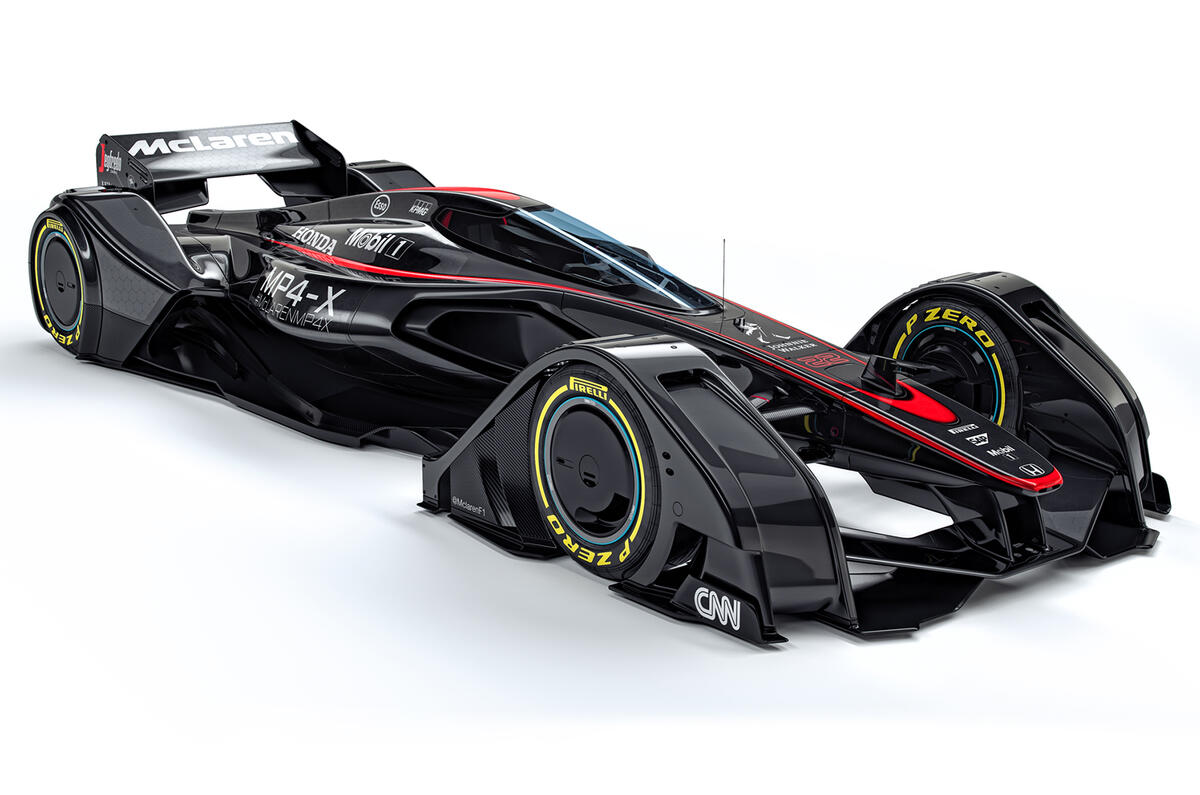

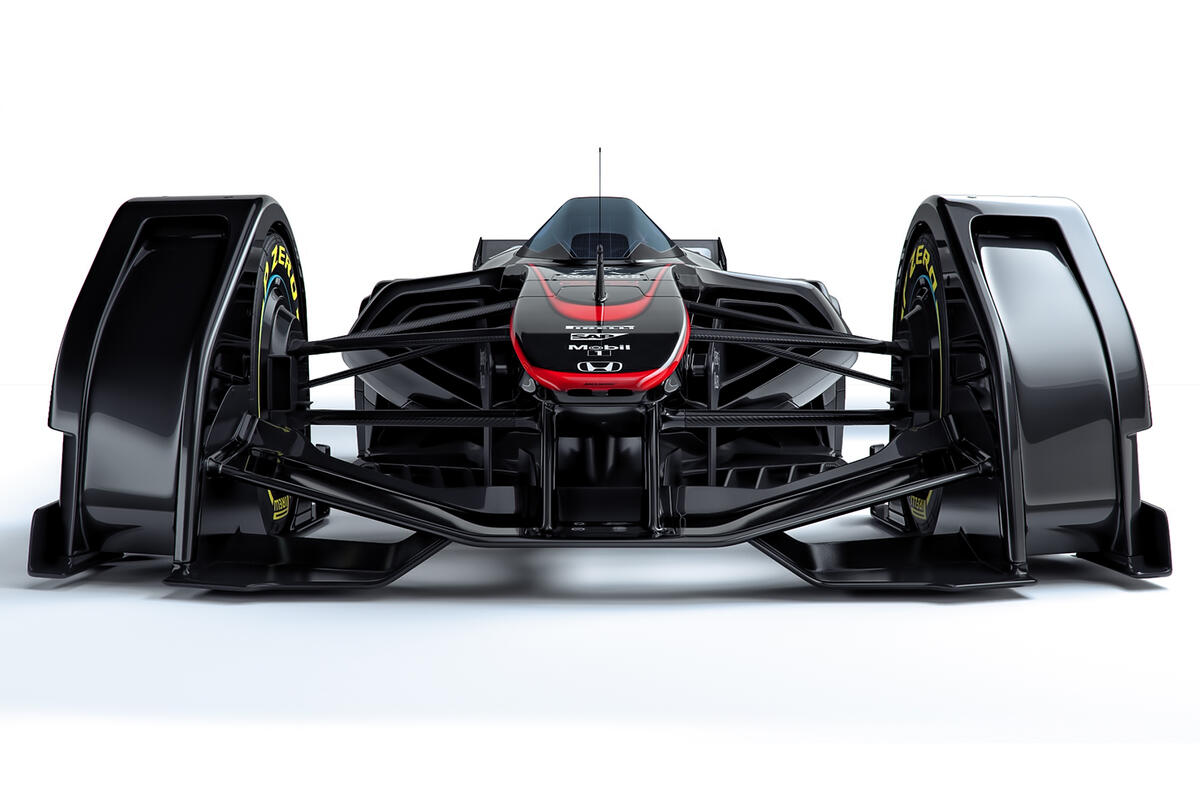
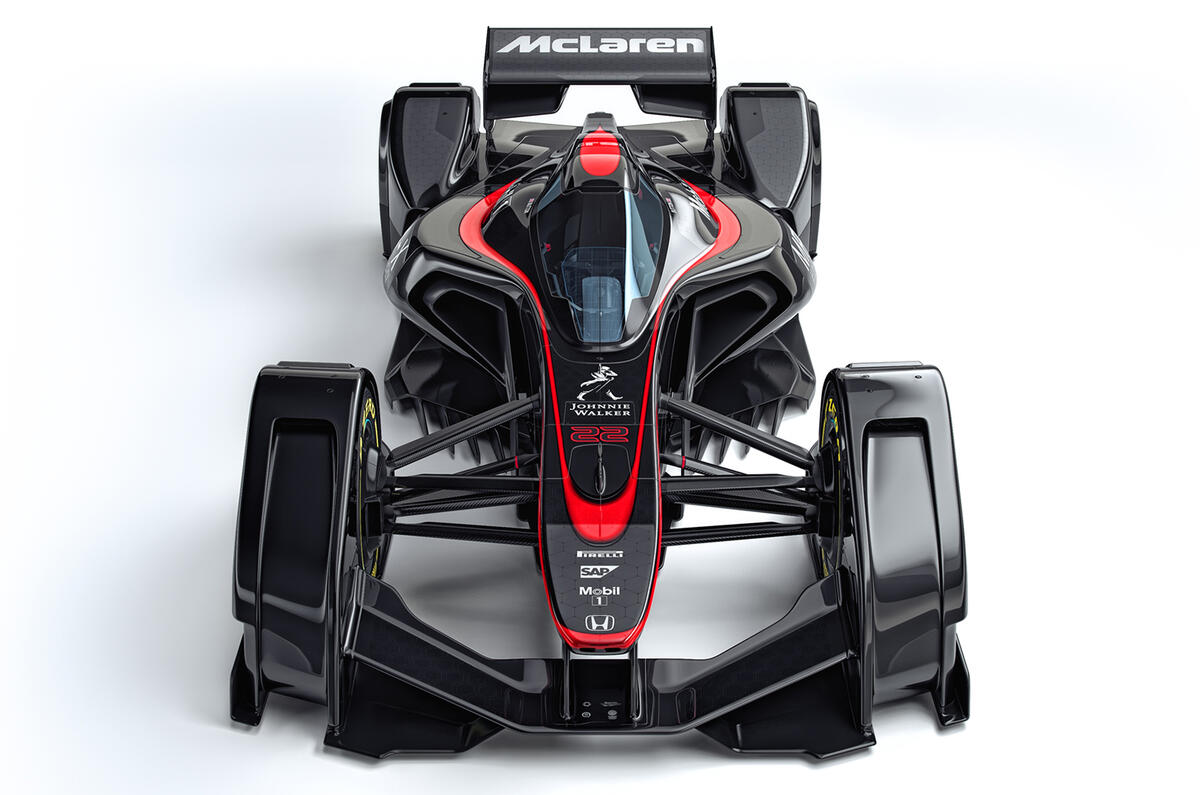


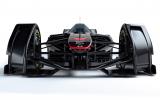
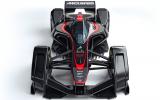



Join the debate
Add your comment
Why the long face?
If you are really looking for
@ 275 not 599
FFS, what is all this rubbish......Mclarens engineers at a loose end with a car that isn't even in the hunt so they are doodling hypothetical cars of the future?
I think they would be better 'set-to' putting all their energies into the here and now -build a car which isn't an embarrassment for 2016.
F1's key ingredients